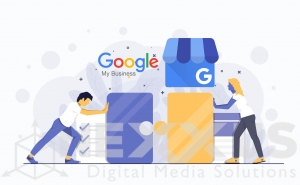CONTENT MARKETING PLANS & STRATEGY
A business that creates valuable, relevant, and informative content that is catered to its audiences becomes the authority of a market or industry. A business that promotes valuable content in effective ways can take the majority share of new business. This goes for big brands as much as it applies to small businesses.

The most fundamental aspect of creating content is defining and understanding the importance of content marketing. There’s a lot of noise about content marketing today, everyone’s talking about it. There is a ton of content out there about the topic but a lot of marketers are not totally sure how to define content marketing and how to fit it as part of their marketing strategy.
Content marketing is the process of creating valuable, relevant content to attract acquire engage your audience. This is just one of the many possible definitions of content marketing but it’s one that we think define and exemplify some of the great aspects of content marketing can do for your business.
Marketing your content is a critical aspect of being visible in today’s digital world so while there’s an abundance of information out there on the internet for your customers they are sifting through thousands and hundreds of messages each day. Whether it’s doing their own research online or a push messaging that’s coming across from marketers’ emails that are coming into their mailbox – there’s a ton of information out there and it’s extremely difficult for you as a business owner to get through all of that noise.
We also live in a multi-device world your customers move seamlessly through their laptops to their phones to their tablet and they can carry information around with them in their pocket able to access it any minute at any time in a 24/7 world.
Because there is such an access to information and tons of these multi devices it is difficult for you as a business owner to get heard from your customers and we live in a multi-channel world as well, so not only are your customers accessing information on multiple devices they’re also accessing information across channels.
What we mean by, your customers are on social media there, on search there, on your website pages and on review sites like Yelp and Google – there’s a ton of different channels today that your customers live and as a business it’s important to be present and be relevant on all those channels.
All of this information in these multi devices / multi-channels equals attention scarcity. What that means is your customers attention is divided among all of these different areas and therefore the attention that they actually have for you and your messaging is scarce. Content marketing helps you actually break through that noise because you’re providing relevance, leadership and you’re differentiating your brand from all the other brands out there.
By creating valuable relevant, educational content you can be seen in front of your customers on those different channels, on those different devices, and become that trusted resource through all of that information.
Content marketing has qualifications so as you’re thinking about planning out your content marketing strategy and after thinking about content marketing in general for your business make sure that these seven elements are present.
1 – Content marketing engages individuals on their own terms. This means being available and being relevant where your audience live. It’s a concept of multi-channel Multi-Device. Some may call it “omni-presence”.
Content marketing is based on interactions with your buyers so you should be creating content that is relevant to what your buyers want to hear, what they’re searching for.
Content marketing should tell a continuous story and should tell not only your business story but also the story of your customers and it does have to be a story.
It has to be a narrative that’s interesting and engaging. Make sure that content marketing is the right fit for your channels so you need to create different types of content for different channels.
One type of content that’s great for social media channels might not be right for email marketing or paid programs so make sure that the content you’re creating is channel specific.
Your content has a clear purpose. This means that all content you create should have a goal and should have a purpose in mind. You’re creating content for thought leadership, brand awareness, lead generation, all of these things make sure it has a purpose.
Your content marketing has predefined metrics. You should be creating content with goals in mind whether that’s x number of new customers maybe it’s new followers on social networks whatever your metric, make sure you determine those before you go in and actually create that content.
Content marketing is almost always evergreen, meaning it keeps in mind your entire life cycle. When you think about different content, it should last months or years. You want to think about content as an arc that spans multiple quarters so that you can get the most bang for your buck.
Some additional stats to keep in mind as you’re thinking about your content marketing strategy and as we define content marketing further.
CONTENT BUILDS RELEVANCE, BRAND TRUST & LOYALTY
71% of consumers trust solutions that provide useful information without trying to sell something, so your content should be educational for the purpose of building that trust in building those relationships overtime.
62% of consumers trust solutions that provide information and best practices for tools they spot. You want to teach your customers how to use your products and services better yet, you want to teach them best practices and you want to educate them. Overtime this will enable a lifelong value.
Life long relationship-building from your customers definition of content marketing and the qualifications takes some time to sit down and determine how you can fit your content marketing strategy into each of these sections.
By mapping out your reasons for content marketing and defining what content marketing means for your business, you can truly create a content market strategy from A to Z. Understanding the benefits of content marketing is critical to creating a content marketing strategy that works for your business.
A lot of the marketing activities that you partake with your company such as attending a trade show, doing a banner ad, paying for a pay-per-click ad, this is all essentially renting attention – you’re paying a fixed fee to rent the audience of another vendor. For instance, if you’re at a trade show you’re paying a certain amount of money to have a booth and to get the benefits of that audience from that trade show.
In contrast to paid advertising, content marketing is like owning your own attention – you’re creating that thought leadership and how your creating that content in-house even though initially there might be a spend to begin with you are gaining your own attention over time.
- you’re promoting your own content
- you’re creating your own audience
Essentially it is like owning your own attention – you’re not continuously spending money on renting other people’s thought leadership in the audience that they have built.
BRANDS NEED TO BECOME CONTENT PUBLISHERS

Brands today need to become their own publishers and content marketing is how to do that. Create your own thought leadership because your audience is out there doing their own research – they’re downloading information online and why not be the place where your customers are finding that information.
Why not be the creators of that research and that’s how brands today become their own publishers.
Some additional benefits for content marketing
Content builds organic awareness through search and social channels. You want to be available when your buyers are searching. They’re doing that research so you want to make sure that your content is front-and-center and by creating content you build that brand awareness so that when your buyers do search your content then your educational materials come up.
People are more likely to purchase from companies who they trust. By creating that content and becoming an educational resource you start to build that relationship and build that trust, therefore if a customer is constantly searching out content on a certain subject and your content is the content that is continuously coming up. When that customer is ready to make that purchase, they will most likely find your content and think about you first, and that’s how you’re building that trust when it comes to purchasing decisions.
With organic content you can reach more buyers at a lower cost, unlike renting attention where you’re paying to rent other people’s audience. The return on content happens over a longer time even though you have an initial spend. Because your content is evergreen, it’s built to last and because you’re building your own audience and owning your own audience you can reach more buyers at a lower cost over time.
Start thinking about how content marketing can help your business overtime, take these benefits and approach internal stakeholders so that you can start reading that plan for content marketing.
HOW TO CREATE A CONTENT MARKETING PLAN
Now that you have a solid plan in place you have to start writing and editing to actually get that content done, writing content can be extremely hard work and building a repeatable process helps.
Let’s have a look at some steps to take in order to build a repeatable process so that you’re ensuring all your written content is consistent, on brand, and that is engaging.
Step 1 – Find a subject matter expert, first, determine who in your organization knows about your topic and then you can schedule and record a brain dump session weather in person or over the phone. We are asking the subject matter expert various questions about the topic, essentially having them do a brain dump. If there is no subject matter expert, be prepared to do the research yourself.
Step 2 – Create an outline, creating an outline is extremely important to keep you organized and on track with your content creation. Make sure you include your thesis in this outline, your thesis this is the point you’re trying to get across with your particular content asset. Make sure you set up different sections, particularly if it’s an ebook and then socialize your outline to people outside of your content team to make sure that what you’re writing about make sense and it’s the right thing.
Step – 3 Write your first draft, this is arguably one of the most difficult parts to content creation make sure your thesis is clear, make sure the thesis is clear up front and that’s clear throughout your document. Also make sure you’re constantly referring back to your main point, and break your content up with headings. it’s important to break your document up in this way so you know where each section lives. Use lots of bullets, lists, and numbers, this is important for scannability knowing that your reader won’t necessarily read every single word of your document. By using bullets and list it could be easy to scan. Make sure you have an intro and conclusion; you want your document to flow in a logical order from start to finish.
Step 4 – Always review, this is an extremely critical part of content creation. The more people you have review the better off you are so typically having one or two people review each draft, more if you have the ability. Each person will generally catch different mistakes, refer to a style guide, make sure that you have a style guide created that goes over tone and brand and then you’re always referring back to that. Always copy and edit for grammar and structure, you want to make sure your content is grammatically correct and you want to make sure it’s structurally sound.
Step – 5 Write a second draft once you have your first draft created and you have all of your edits incorporate, all of them read over it an additional one to two times to ensure that the final copy. Then make sure all your stakeholders have seen the copy, make sure everybody knows that the content is correct and everybody that needs to I signed off on that content.
Once you have your final draft then you’re ready to send to design, if you are business owner with a small budget or a small team consider working with lean content creation. Most business owners or marketing managers are on a budget that’s simply a fact and you have to be more with less, especially with increasing demands on marketing teams and content marketers.
Today we’re being asked to do more with less resources, so how can you get it all done?
You can create one large content asset, slice and dice it to create additional smaller supplemental pieces so that you can get more content with less.
MULTIPLY & GROW YOUR CONTENT MARKETING
Let’s take a look at how this works in action
1 – Create a big content asset, a piece that you’ve put a lot of effort into. This could range anywhere from fifty to a hundred-sixty pages in length, if you have the time it’s worth the time. From this one piece you can generate a ton of additional content. If you can generate a ton of additional content, that’s just more for all of your programs.
2 – Create eBooks from the chapters of a piece of “cornerstone” content, so we took that one piece and we broke out each of the individual chapters to create digital ebooks each of them has different covers and different titles that they differentiate themselves. You can see the comment seemed going throughout all the ebooks however they are shorter and they are on different topics, so it is more content that you can sort out and promote.
3 – create pieces that are smaller, more digestible parcels of content that range in length from about one to two pages go throughout your cornerstone piece of content and pull out items that you think could make a good cheat sheet or guide. This is a simple, easy exercise that was about one to two pages and then mapping lead generation to your sales funnel. Some of these can even be printed out by your readers the idea is to give them something easy to digest and scannable.
4 – create visuals you to extend the life in the value of your cornerstone content campaign. You want to make sure that you’re creating visuals from each of these pieces. A visual could be an infographic, slide deck, or a workbook. Remember you’re just taking the same content and the same statistics that you’ve used in your cornerstone piece and you’re just repurposing it in a different and more engaging or visual way. Either are great assets for you to share on social media as well as email campaigns.
5 – create a video take the content from your cornerstone piece and create a fun video, this doesn’t have to be something that’s highly produced. It could even be a video created on your iPhone or something that your created in-house; the idea is just to have an interesting engaging and fun supplemental piece of content to promote your written content asset.
6 – create blog posts from your cornerstone content, you can create dozens of blog posts from the content. Just slice and dice it out based on what would make sense for your blog. As an example, for the cornerstone content piece of “guide to website lead generation” we generated about 3 to 5 blogs that we spaced out over the course of two to three months. Your blog content can go on forever, so certainly keep this in mind as you’re writing.
Now you know all of the steps that it takes to trade a cornerstone content piece and slice the content out to generate more with less.
Sit down with your team to determine what your topic should be, and get to writing once you have figured that out. Creating the written content, then it’s time to send it to design for either images, website blog, video production or the additional mediums you can break it down into.
CREATING VISUALLY ENGAGING CONTENT
Good content should be complimented by good design, all of your content should be highly visual. It’s an important part of creating content in today’s market, but how do you make all of your content visual?
Let’s go over a few content design guidelines to keep in mind when creating your content for marketing.
First, make sure that your logo and icon usage is on brand and correct, you need to take into consideration typography. You might have a certain font that is appropriate for your brand. Make sure you’re consistently using brand colors, even though you can be creative with your content design, you want to make sure it looks like your company is in on brand. You also want to use photography and image styles that also make sense for your brand and that are engaging.
Some major types of content visual design like an ebook lead magnet for example, your e-book cover should be visually engaging, this is how you’re going to get people to download your ebook or PDF. The design and presentation are what’s going to attract them to your content.
The cover, the title, should be clear, make sure that you don’t have lots of different design around your title that obstructs it. Make sure your title is clear at all times, watch for proper templating, keep your design clean and make sure that your interior pages are extremely clean and easy to read.
Then use images that relate to the content, something that you need to be aware of is having images throughout any piece of content. Do not use images that have nothing to do with the content, and make sure your images are relatable.
Let’s go over infographic design. Graphic design should be engaging and shareable, this is definitely your opportunity to be creative. Consider a theme for your infographic and make sure that your statistics are presented in an interesting but legible way. Make sure it’s clear what those stats are so that your readers don’t have any questions, and then don’t make your infographic too long in that people have to scroll down quite a bit. Don’t make it way to copy-heavy.
CONTENT MARKETING SCHEDULE
Now that we’ve broken down all the different content concepts you can then start to formulate what your content marketing mix is going to look like.
Once you have a good idea what types of content you will be creating, next you have to plan your editorial calendar. Before you create your content calendar you need to think about your content mix what are the different types of content you’re creating and how are you going to fit them in your plan.
An editorial calendar also helps you increase visibility across your organization so that people in your company know exactly what content you’re creating and when. The content mix that we spoke about earlier, you should organize based on different teams depending on who you’re creating content for.
Any ongoing campaign, you have to keep in mind strategic initiatives that should all be on your editorial calendar. There are many calendar options, basically you just need to make sure that you’re putting them down into a calendar form, you can use a calendar in your content management tool like Google Calendar that you can share with folks across the organization. Or a Google spreadsheet in Google Drive, even if you don’t necessarily want to put it in a calendar form or your marketing automation calendar. Many marketing automation platforms today have calendar functionality that you can integrate your content mix.
Your editorial calendar should be available to marketing, sales, customer service, executives or anybody else who wants to know what specific content that you’re creating.
Here’s a few examples of different types of content calendars
1 – a detail spreadsheet could be useful if you have multiple different content types you want to include the status production start and completion date maybe you want to say what business unit this is for your persona resource section type if you have lots of different items that you need to put in a calendar for sometimes a spreadsheet type format works great counterexample
2 – is within a content management platform this one is from divvyhq this one has an actual calendar format where you can toggle based on specific do days what calendar so what business unit for a team member to sign to content type content strategy no matter how you decide to organize your editorial calendar and what you include in your calendar make sure it has that content mix that we spoke about and that everything is organized so go ahead write down your plan and put it in a calendar before you start promoting your content you need to determine your gating strategy what is Jaden getting means putting a form in front of your content for the purposes of gathering lead content information
Now that you know you’re gating options, sit down with your team and stakeholders to determine what makes sense for your unique business case before you actually go out and promote your content.
You need to outline your promotion strategy, once you publish your content online you then have to promote it through various channels.
PROMOTING YOUR CONTENT
Let’s go through step-by-step what you need to think about when outlining your promotion strategy.
1 – create a strategy document, once you’ve published a piece of content you must send out a strategy document to your team that outlines and includes the following items:
- about the audience the content piece addresses
- the different goals at the content piece addresses
- the thesis that’s included in the content throughout
- the table of contents if available
- the buying stage that the content was created for
- any promotion suggestions that you as a content team might have
2 – always score your content, you can use your marketing automation tool to score your different content types. You can often toggle to score Up and Down based on the importance of your content piece but by scoring your content, you can help determine how close a person who downloads it is to being a customer.
3 – meet with your stakeholders, you want to set up some time with your various promotional teams to go over goals and to describe to them what the asset is about and what it should be used for. Set up some time with your demand generation teams, social media, your online marketing teams, product marketing, and public relations.
4 – create a promotion plan, to work with each team stakeholder and create an overall promotional plan for each content asset. For large assets, consider meeting weekly or bi-weekly until launch. Assign a project manager, this might be yourself or it might be a member of the promotional team. Then, ensure that team member stays on task over time.
5 – make sure your plan is multi-channel, you want to be where your buyers are. Your buyers might be on social media, they could be on your website, but wherever they are be sure that your promotion plan touches all these areas by promoting your content on multiple channels. You can ultimately maximize your exposure, and also remember to promote content on appropriate channels for the content type as not all channels make sense to promote every single piece of content on. Then always test your promotion strategies, you might think that you want to promote content on a certain channel, but then discover if it’s not the best channel for that particular asset.
Now that you sat down with your stakeholders and outlined your promotional plan it’s time to actually get promoting.
Let’s talk about ads. You can promote content throughout your website using banner ads, and other images, consider promoting content on your product pages where applicable.
MAKE YOUR CONTENT CONVERTIBLE
Now that you have your content published on your website, it’s important to think about how to optimize it for conversion. Promoting content on your blog is a great way to get any new content asset in front of your audience, your blog attracts early-stage buyers and is great for lead generation. Eyes get on your content and it’s a great place for social ready content to live, do not discount the importance of your blog when it comes to promoting any new content.
Promoting content on your blog enables you to drive even more traffic to your blog and your content over time so let’s go over a few tips for promoting content on your blog.
Don’t just promote your ebook, give your audience actionable takeaways. This means when you write a blog post that promotes a new ebook don’t just say, hey here’s our new ebook and then included downloadable blank. Make sure that you’re taking valuable content from within that ebook and making a standalone blog post that way it’ll be a piece of thought leadership in and of itself.
Use bullets and headers for easy skimming, this is for your blog as a whole. Most people won’t sit there and read a blog post word for word, so make sure that you include multiple bullets and different headers so that your reader can easily skim through the post.
When it comes to content marketing, don’t take yourself too seriously remember that social media is a place where people congregate to share their thoughts and ideas and it could be a personal Network that you’re sharing your content. Organic isn’t enough on its own and don’t be afraid to boost your presence, it’s one thing to post your content organically through your social channels but you want to put a little bit of paid boost behind your content in order to optimize it for conversion and get it seen by a lot more eyes.
- Focus on valuable content and solid offers.
- Create strong call to action, when you post a content asset make sure that your audience knows exactly what to do, whether it is to download an e-book or share an infographic, or fill out a form.
- Always provide value, make sure that the content that you’re posting on social media is educational and helps your audience do their job better.
Never forget that social platforms are a two-way street, make sure that you’re constantly listening to your audience and taking their feedback into consideration.
CONTENT MARKETING FOR SOCIAL MEDIA PLATFORMS
Let’s go over different social networks and ways you can promote your content on those networks.
Facebook is a great place to promote your content. Facebook as a highly visual medium, and so it lends itself very well to content promotion. You can promote your content to organic posts on your company page, you can also promote those posts by putting some paid ads behind each of those organic post for additional boost. You can create Facebook ads that appear on the newsfeed, you can promote your content by trading custom cover photos that appear in back of your profile image, you can also create apps and tabs that would also appear on your business profile page. Somebody could click on a tab and download content by filling out a form.
Twitter is a very fast-moving social network and also a great place to promote your content. You can promote your content via organic tweets from your business Twitter profile, you can promote those tweets using paid ads, you can also promote your content hashtag by using promoted. You can also use Twitter lead generation cards where you can actually have somebody fill out a form or poll through Twitter itself (this also works on Facebook) using their information and they can download an e-book, or something you offer.
LinkedIn is particularly useful for the B2B market as people are generally on LinkedIn for business purposes. Here are the different ways you can promote your content through LinkedIn. You can use LinkedIn updates from your company page and then you can sponsor those updates to get additional reach and visibility. You can create LinkedIn ads which appear on the right-hand side of your LinkedIn profile or in the newsfeed section, and you can also join LinkedIn groups that are relevant to your particular topic and promote your content through those groups.
SlideShare is a perfect place to promote your visual content such as slide-decks and infographics. You can also optimize your SlideShare postings for search engines by using keywords in the description fields also offered the opportunity to include lead generation forms that sync automatically with your marketing automation tool.
Pinterest is also a highly visual medium that’s great for promoting types of content like infographics and slide decks or images. On Pinterest you can share your content and engage your audience by creating boards and pins. Pinterest is particularly great for a b2c marketing audience but also works well for being B2B especially if you’re creating a variety of visual content.
Note that all social channels won’t necessarily work for every single content so be very particular where you post your content, but take your content post on social media and engage your audience.
One of the best ways to get your content out in front of your audience is promoting it via email. increase the reach of your content by promoting it on email. Let’s go over a few tips on how to make sure your content emails are engaging and relevant to increase open rates.
Always segment your email lists the send content only to people who will find that content relevant.
Design your emails to be engaging, you want to make sure that the people that are reading your emails find your emails engaging and want to download the content asset inside. Create a custom header by using the design of your content asset, make sure you include brief copy with bullets. You want to make sure that your email is easy to scan, include a strong and a clear call-to-action and then create a hero shot of the content asset.
Send an email to your entire database, so hopefully you have a large marketing database and once you publish a new piece of content send an email out to your entire database using the segmenting rules discussed above.
Consider a sponsored email, a sponsored email is when you pay a trusted vendor to send out an email including content on your behalf. Be careful here and make sure that you’re only using vendors that are not only reputable that have a target audience that matches your target audience.
CONTENT MARKETING & PROMOTION
Add your new content to your lead nurturing programs. If you’re using marketing automation, you should be nurturing your leads once they hit your database.
Make sure to add any new content into relevant segments to ensure that even people that have already been in your database for a while receive your content. Email is a fantastic way to get your content in front of an audience.
If you remember to segment or tag make sure your email is engaging and relevant. You can increase the chances of content downloads using pay-per-click ads to promote your content. PPC ads are highly targeted paid ads that drive traffic to a custom landing page where you can generate leads and you can use your content to do so.
Let’s go over a few types of ads that you might want to take into consideration for marketing your content.
1 – Search engine ads appear on a search engine (like Google or Bing) and are targeted based on keywords.
2 – Display banner ads appear on various websites and are targeted based on demographics.
3 – Re-targeting ads appear on a network of websites and are behavior based, these look very similar to banner ads however they are based on if someone has previously visited your website content.
With pay-per-click ads you pay only as a visitor clicks on your ad and you can target your ads using traffic behavioral metrics and search criteria. There are various tips for using PPC ads for content promotion. First of all, consider using high-value mid-stage content for your ads, because you’re spending a lot of money in your ad program you want to make sure that you’re only using the best relevant content.
Your ad should have a fun visual or engaging copy, this will make a difference whether the banner ad or a search engine ad. For search engine ads in general, you can only include copy so you need to make sure it’s engaging.
Banner ads can have a fun visual creative.
All ads should go to the landing page, the content piece you are promoting. Your ad should not just go to a website homepage. A landing page that shows your lead exactly what they should be doing, particularly if it’s downloading a piece of content, you want to make sure that you’re collecting all of their information in an online lead capture of some kind.
All landing pages for your ads should have a form, a means of capturing visitor information, however simple as possible – there must be an exchange of equal value.
Take your high-value content and determine what types of ads might be appropriate for a promotion because ads can get quite expensive, our advice here is to ensure that you are only choosing your best content that shows buying intent because spending money on promoting content that is information based can cost you down the line, as most customers in the info phase are not ready to buy yet.
Create your ad copy and develop your custom landing pages, either on your own website or with a custom landing page builder, and purchase some ads on the appropriate networks. We will get into how to setup and optimize your ads in other articles.
We would like to mention that if your call to action from an ad is a phone number, that you are using a call-tracking system that provides individual phone numbers for your ads.
MEASURING CONTENT EFFECTIVENESS, ROI & ENGAGEMENT
![]()
It is time to start measuring the engagement of your content, but first, we have to start by defining your measurement goals. Many business owners don’t often think about ROI during content creation, you must think about how to measure your content before your content is even created. If marketers aren’t aligned on metrics among the teams happens if you’re creating content in a silo, one team might be tracking one metric and the other team might be tracking another metric, and then markers don’t know how to measure content effectively because content marketing is a relatively new or discipline.
With many businesses, and marketing firms for that matter, there aren’t established measurements in place but measuring content can be done even if you have already started content marketing & promotion.
Establish goals and measurement estimates up front every time you create a content campaign. You need to determine what you’re hoping to get out of that content piece in terms of measurement.
Define what you want to measure for each content piece, are you looking for social sharing, are you looking for increased traffic, are you looking to measure revenue? Define exactly what you’re looking for in each piece, and align with all key stakeholders to get their input. It’s important to sit down with all the executives or managers or sales directors in your business to determine what the proper content measurement should ultimately be.
In order to measure the effectiveness of your content you need to have an actual content marketing budget, and that you know exactly how much you’re spending on content because this will determine how well you can compete with others who are also promoting their content, and it makes a difference for the return on investment in the end by putting together a sample budget.
You can better determine exactly what the ROI is on your content promotion over time, and then you should determine what are other marketers measuring in your content.
Many businesses have trouble structuring a content team, this is because it would SEEM that content marketing is a relatively new thing, but it is not. Content marketing has been around since the first time anyone has ever tried to advertise something. Content comes in many forms, not just by text, but also in visual, audio, and animated mediums.
WHO IS RESPONSIBLE FOR CONTENT CREATION?

Many organizations simply don’t know where content should be within the organization and how it should be set up or used to promote the brand. A question that we get asked frequently is, what team within marketing should own content, should the content marketing team, how about product marketing, should it be in corporate marketing, inbound marketing, brand marketing – these are all areas of the marketing an organization that can create content so content marketing could potentially live in any one of these business departments.
All of these different teams or departments create content on a daily basis, and if content gets aligned with only one team, content then gets created in a silo.
Content marketing must be looked at in a holistic way that reflects the brand messaging, the brand look and feel, and the way the brand wants to speak about itself across the organization. What if we didn’t align content with anyone on the team, what if content marketing was actually a neutral team within the marketing organization so that every team can benefit from centralized content that way your organization can have a much more holistic view of content and content gets to be much more strategic.
Instead of accepting whatever your departments or teams can dream up, think about content as a strategic creation of media.
DEFINING THE VOICE OF YOUR BRANDED CONTENT
Make sure that your content is consistent, you want to work on developing your brand voice. Your brand voice presents a consistent experience across channels giving your brand a recognizable persona, this is extremely important because your brand voice will ultimately help you stand out.
There’s a ton of information out there and a ton of noise online, so you want to make sure that content is specific and unique and by developing a brand voice that speaks to your organization your content will stand out from the noise.
You want to create your brand voice persona your brand voice Persona is essentially the feeling that you’ll want your content to convey. Your persona might be conversational, accessible humanistic, educational, authoritative, professional, there’s a wide variety of attributes that you can use to apply to your brand voice.
Brand voice tone is essentially the way that your content will sound. It could be friendly, direct, honest, formal, perhaps its scientific, or humanistic, there’s a wide variety of attributes in ways that your content can sound which creates the sentiment that surrounds your brand messages and voice.
Create a brand style guide, once you have your persona and your branded voice tone all dialed in, you want to put that down on paper so that you your content team and any external writers that work with your company can determine the exact style in which to write for.
For a company style guide, you might want to answer questions such as who is your company, who do you sell to, who makes up the content team, your style, writing tone, specific grammar guidelines, as well as content types and structure. This could be short or as lengthy as you want the more information you put in there the easier it’ll be to train incoming content production members on your teams.
One thing to know is that your tone might differ slightly for each customer-persona as you build out your different personas and learn what each customer avatar likes for their content.
Overall, your brand voice should stay consistent throughout your content, but lean towards the types of personas you have identified and the platforms in which the content is published on respectively.
To define success, a content marketing plan without goals will simply not go anywhere, the goals are critical to ensure that the content you’re creating is the right content.
Meet together with your teams or departments to get their point of view on goals your content can achieve. Your sales dept, for example, might say that if you had content that helps customers better understand our business we would have an easier time making sales.
Ask yourself some foundation questions; Why are you creating content? What programs are you planning on using with your content? What are your short-term and long-term goals for content marketing?
Asking yourself and your stakeholders these questions will help you set a solid foundation for creating a content marketing strategy that is goal oriented.
Define your qualitative goals, these are goals like brand recognition, thought leadership, social engagement, relationship building, trust, these are all extremely important goals to content marketing. These types of goals might not have a monetary number assigned to them, but they are critical. These are goals centered around building your brand affinity & awareness.
Define your quantitative goals, these are goals that actually do have a number associated with them. These might be number of new leads, number of downloads, specific number of social shares, percentage of leads that turn to opportunities, how much pipeline your content has generated, how much revenue, quantitative goals are measurable and should be measured.
You could track your goals in your marketing automation platform, if you have one. This is great for tracking those quantitative goals like number of leads, downloads, and revenue.
Google analytics is great for traffic and conversions tracking. Add your goals to a plan and put it down on paper, you want to socialize your goals with your team. You can schedule weekly or monthly metrics check-in meetings and hold your content accountable to your goals.
You can’t create a content plan within a vacuum, so by showing your organization that you are able to track content efforts to fine details you ultimately get more budget to the metrics that prove the highest ROI.
HOW TO CREATE CONTENT TO PROMOTE
Content creation is a process. Before you can start actually creating your content you need to brainstorm your ideas and create your content. Coming up with content ideas can seem daunting, it is easy to encounter writer’s block when it comes to content, but following some content creation outlines, and looking in certain places for content ideas can get you started.
Before starting, you need to determine what topics you should consider for content and this will vary based on your business. Often, it’s great to start by taking into consideration your business priorities, this could be new markets that you might be trying to launch in additional product launches, or service launches, branding initiatives within the business, or different leadership topics that you want to become thought-leaders in the industry about. These are all great topic categories to write content from.
You also want to take into consideration your customer personas and who you want to sell to. You might be writing different content for different personas; you might find different topics will resonate with each one of your personas in different ways. You also want to take into consideration industry trends which are a great place to start generating some curated content that could get your audience interested.
Try to make sure that you’re on the cutting edge of what’s going on in your industry. Many other businesses also want to be on the forefront, and you want to be able to write thought leadership about what’s going on with your peers or vertically related business sectors.
Search engine optimization priorities are also an important thing to keep in mind many, as companies will want to make sure that their content is SEO (Search Engine Optimized content) meaning their content will show up in search results and you might have specific keywords that our company prioritizes.
For example, if your company sells mobile applications “mobile app development” might be one of your keyword phrases, and you want to make sure that you write plenty of content around mobile apps as a whole category.
Competitor content is also an important thing to keep in mind, take stock on what exactly your competitors are writing about. You can find this out through following them on social media, using a competitor content tracking platform, or just keeping up-to-date.
Practice researching by doing some of your own digging within your organization to determine what other teams want you to write about. Ask your sales and customer service teams what type of content would help them not only sell more, but also keep customers happy for longer.
Listen on social media to determine what your market audience is talking about. You also want to ask your audience on social media what they might want to hear. You can send out a tweet or put a Facebook post out there and simply ask your followers what type of content they like to see from you.
Once you have a solid brainstorm, a topic that you want to write about, then you can create your content and its creatives.
Your sales funnel typically starts at a very wide and broad top end where most of those people are looking to make sure the product and their budget are a good fit, and it the ‘thing’ will solve their problem or give them what they want.
New buyers close to becoming leads are a little narrower in the middle of your funnel where you’re actually starting to nurture those people, they have taken something of value from you and you know they are interested, you know who they are.
The bottom of your sales funnel are leads that are very close to becoming customers.
How long the sales funnel is based on your business but it’s important to understand your funnel and to start to match your content to these different stages in that buying cycle so that you can meet them there at all stages.
FAQ ABOUT CONTENT CREATION & CONTENT MARKETING
- What is content marketing?
a type of marketing that involves the creation and sharing of online material (such as videos, blogs, and social media posts) that does not explicitly promote a brand but is intended to stimulate interest in its products or services.
- How to do content marketing?
Content marketing includes things like educational articles, e-books, videos, entertainment, and webinars that answer specific questions people have and provide them with something they can’t get elsewhere. It’s the best way to turn your product, no matter how common, into something that is not like everyone else’s - What are examples of content marketing?
The article you are reading right now is an example of content marketing. - What is content strategy?
Content strategy focuses on the planning, creation, delivery, and governance of content. Content not only includes the words on the page but also the images and multimedia that are used. - Why do you need content marketing?
Content marketing is a low budget, high ROI method of meeting your potential customers where they are in the sales cycle.
GLOSSARY OF TERMS FOR CONTENT MARKETING
- Agile
- Analytics
- A/B testing
- Blogging
- Buyer Persona
- Content Strategy
- Call to Action
- Clickthrough Rates
- Conversion rates
- Crowd sourced content
- Content curation
- Content Syndication
- Data content
- Dynamic content
- Editorial calendar
- Evergreen content
- Engagement
- Formatting content
- KPI – Key Performance Indicators
- Lifecycle stages
- Promotion
- PPC
- Paid Promotion
- Quality content
- Informative content
- How-To content
- Social content
- Search Engine Marketing
- Search Engine Optimization
- Sponsored content
- User generated content
WHAT OTHERS SAY ABOUT CONTENT MARKETING
Forbes:
https://www.forbes.com/sites/joshsteimle/2014/09/19/what-is-content-marketing/







